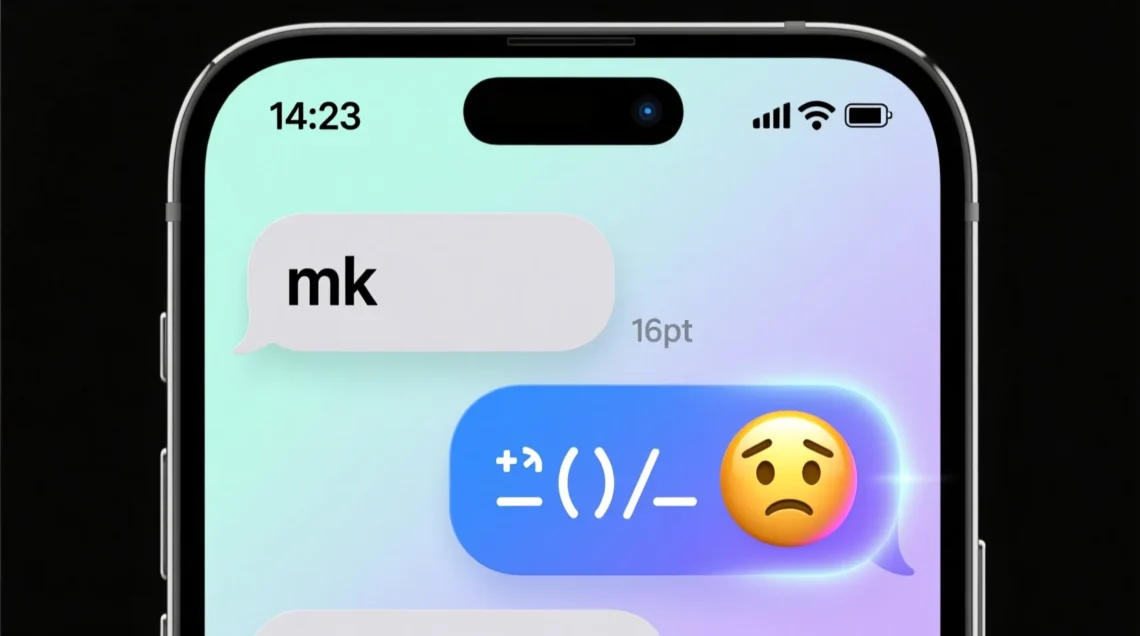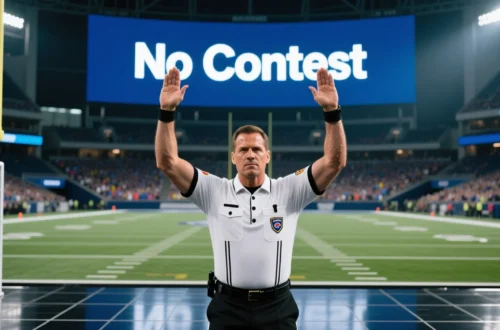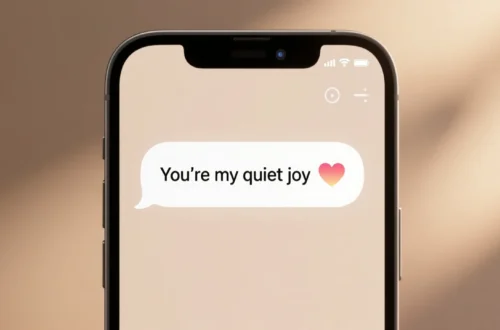Hey there, texter 👋! Have you ever seen someone reply with just “mk” and wondered what that’s about? Whether you’re chatting with friends, replying to a story on Instagram, or commenting under a TikTok, this little abbreviation pops up a lot.
If you’re someone who wants to stay on top of texting shorthand, social-media slang, or speak the language people use on WhatsApp and Snapchat, this article is for you. Today we’ll break down what “MK” means in text, in what situations it’s used, and how you can reply correctly — so you never feel lost in a chat again.
Let’s dive in and decode it together.
Definition & Meaning
So, what does MK mean in text?
👉 The most common meaning is “mmkay” or “mmm-okay” — basically a casual “okay”.
Key nuances:
- It often functions as a quick acknowledgment: “Got your message, cool.”
- But it can also carry subtler tones: hesitation, indifference, or even mild annoyance depending on context.
Examples in dialogue:
Friend 1: “I’ll drop by at 6.”
Friend 2: “mk.” (Here: casual acknowledgment.)
User A: “I guess we’ll change the plan again.”
User B: “MK… fine.” (Here: reluctant, maybe slightly annoyed.)
So the exact meaning depends heavily on the tone, the relationship of the texters, and what was said before.
Background & History
The abbreviation MK comes from the longer, informal “mmkay” or “mmm-okay” — a drawn-out “okay” people used in chats and online forums.
With texting, social media and messaging becoming faster and more shorthand-friendly, “MMkay” was shortened to “MK” for speed and ease. Over time it has taken on a range of emotions: simple agreement, passive acceptance, and sometimes mild sarcasm.
Today you’ll find “MK” all over platforms like Snapchat, TikTok, Instagram DMs, and group chats — especially when someone wants to reply quickly without typing a full sentence.
Usage in Various Contexts
Here’s how MK shows up in different chatting scenarios:
1. Casual Texting
Person 1: “Did you finish the assignment?”
Person 2: “mk, doing it now.”
(Simple confirmation)
2. Social Media Comments
“I’m only going out because my friends made me.”
Reply: “mk…”
Here it may imply acknowledgement + a bit of “whatever” tone.
3. Gaming / Group Chats
Gamer A: “We’re going full try-hard tonight. Ready?”
Gamer B: “mk”
(Acknowledgment, maybe not super excited.)
4. Professional Settings
Not recommended. A message simply saying “mk” to a coworker or boss can come off as dismissive. Better to use “Okay, sounds good” or “Understood.”
Common Misconceptions & Clarifications
❌ Misconception 1: “MK” always means “Okay, great!”
Not necessarily. It can be “Okay” but with a hint of “I’m not thrilled,” or “I’m just replying because I have to.”
❌ Misconception 2: It’s formal or professional
No — it’s very informal. Using it in formal chats or with people you don’t know could seem careless.
✅ Clarification:
When you see “MK” on its own, pay attention to:
- The preceding message
- The sender’s usual tone
- Whether there are emojis or tone modifiers (e.g., “mk 😅” vs “mk…”)
Similar Terms & Alternatives
Here are some related texting responses:
| Term | Meaning | Tone |
|---|---|---|
| OK | Okay | Neutral, standard |
| K | Short for “Okay” | Very brief, sometimes abrupt |
| KK | Okay, okay | Friendly, informal |
| MK | Mmm-okay / okay with nuance | Casual, maybe hesitant or indifferent |
If you’re ever unsure, using “Okay” or “Got it” is a safer bet in mixed company.
How to Respond to “MK”
When someone sends “MK”, how you reply depends on what you think they meant:
Casual Response:
Friend: “MK, see you at 8 then.”
You: “Cool — see you then!”
Funny Response:
Friend: “MK… guess I’ll join.”
You: “Yay, forced fun begins 😂.”
Professional Response:
Colleague: “MK, I’ll send you the draft.”
You: “Thanks — I’ll review it when it arrives.”
Privacy-Conscious / Clarification:
If you’re unsure how they meant it:
“Just to confirm — when you say ‘MK’ do you mean you’re good with it, or you’re okay but don’t feel strongly?”
Regional or Cultural Differences
“MK” is widespread in English-speaking digital cultures — the U.S., U.K., Canada and among younger internet users globally. In non-native English areas, many users still understand it but might prefer simpler “OK” or “K”.
In some cultures or age groups, the nuance (“slight annoyance” or “indifference”) may not be picked up — so users might misinterpret a plain “mk” as cheerful when it’s not. Meaning context + culture matter.
Comparison with Similar Terms
| Abbreviation | Most Common Meaning | Typical Tone |
|---|---|---|
| MK | Mmm-okay / okay | Casual, maybe hesitant |
| K | Okay | Very brief, can feel blunt |
| OK | Okay | Standard, neutral |
| KK | Okay-okay | Friendly, casual |
Usage in Online Communities & Dating Apps
In dating apps like Tinder or Bumble, you might see “MK” in replies where someone doesn’t want to carry on a long chat:
“Should we meet up Saturday?”
“mk”
This could mean “Alright, sure” — or possibly “I’m not excited but okay.” Knowing that helps you gauge interest.
In Reddit threads or gaming chats, “MK” is often used in mass responses:
“MK, thanks for the update.”
Again, tone matters.
Hidden or Offensive Meanings
The good news: “MK” doesn’t typically carry an offensive meaning. It’s just an informal acknowledgment.
However — because it can sound terse or disengaged, if someone sends “mk” when you expect enthusiasm, you might feel ignored or brushed off. So the tone and relationship matter.
Suitability for Professional Communication
In a workplace or formal context, avoid sending “MK” by itself. It can look dismissive or lazy. Instead use:
- “Okay, thanks.”
- “Understood, I’ll handle it.”
- “Sounds good — I’ll proceed.”
Save “MK” for chats with friends or very casual conversations.
FAQs
1. What does MK mean in text?
It usually means “mmkay” or “mmm-okay” — a casual way to say “okay.”
2. Is MK the same as K or OK?
It’s similar, but MK often has a slightly different tone — more casual, maybe less enthusiastic.
3. Is MK rude?
Not inherently, but if used alone and without context, it could be perceived as uninterested or dismissive.
4. When should I use MK?
In casual chats with friends, social media comments, or in quick messaging where you don’t need to say much.
5. When not to use MK?
Avoid in professional emails, important discussions, or when you need to show active interest or emotion.
Conclusion
So there you have it — MK isn’t just another confusing abbreviation. It’s a nifty shorthand for “okay,” often used in casual digital chats. But remember: while it may look simple, the tone behind it changes everything.
Use MK with friends, in laid-back chats, and when you’re okay but not overly invested. In more serious or professional settings, choose a fuller response.
Now when you see “MK” in a message, you’ll get it — and know how to respond like a pro.






